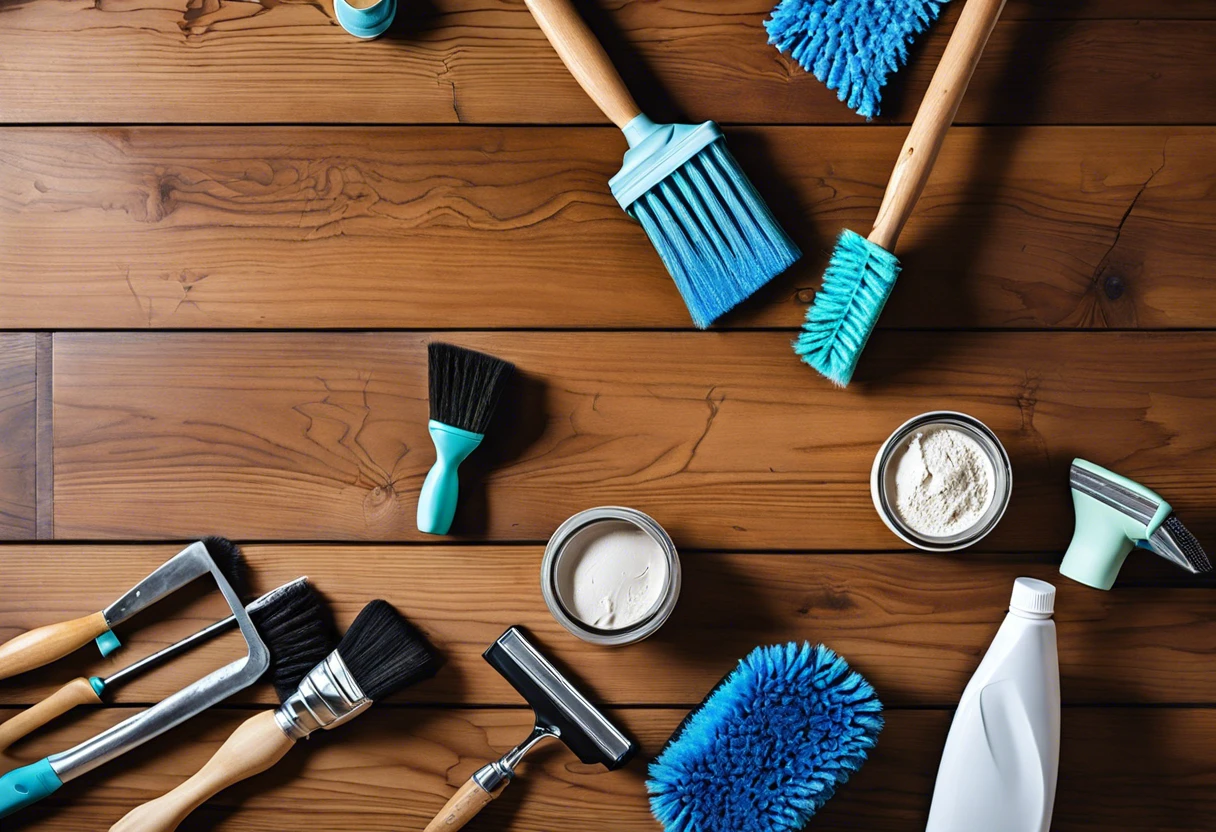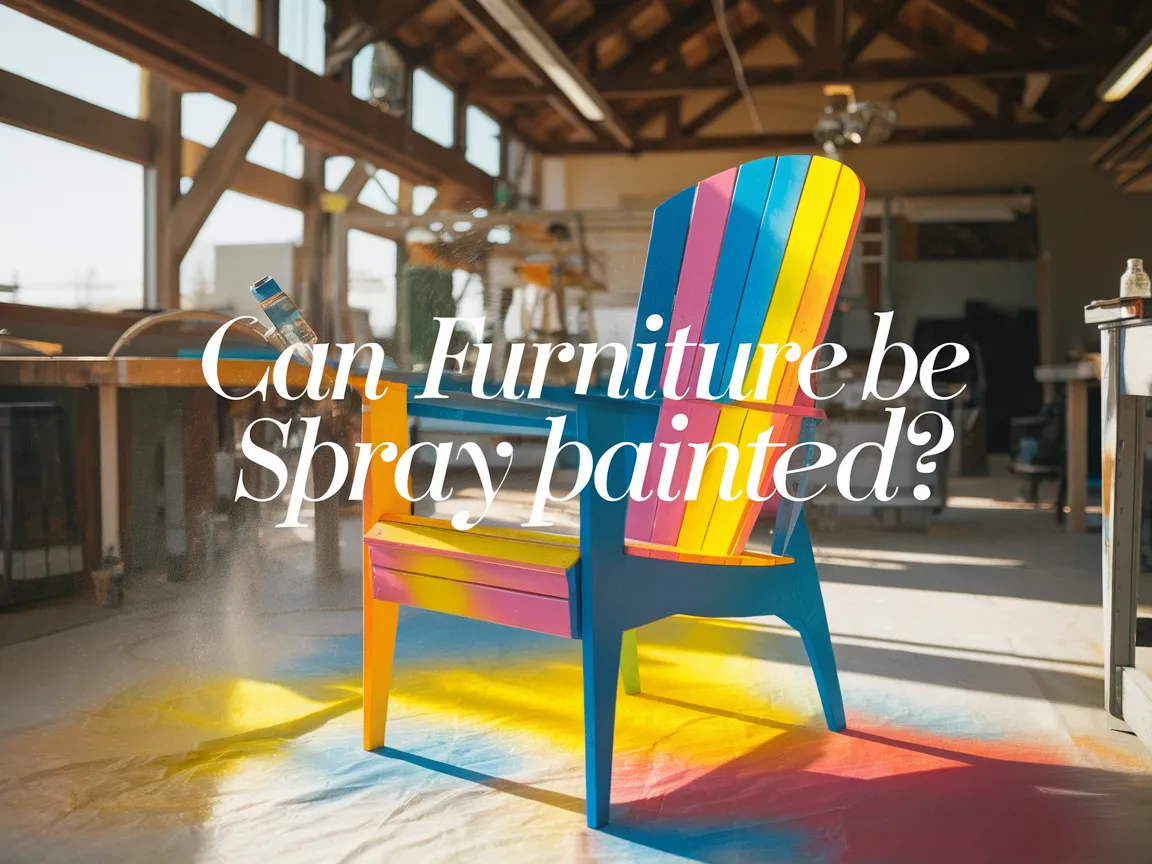How to Get Dried Paint Off Of Hardwood Floors?
Published on: November 24, 2025 | Last Updated: October 1, 2025
Written By: paint_answered
Hardwood floors are made from real wood, giving your house a natural, warm look. It’s like having a piece of nature indoors!
Knowing how to get dried paint off of hardwood floors is super important. Trust me, I’ve seen how a little paint can ruin a beautiful floor and bring down the vibe of an entire room.
In this guide, you’ll learn what hardwood floors really are, what you need before you start, a step-by-step paint removal process, and dealing with common issues. Plus, I’ll share DIY ideas to enhance your floors and tips on color matching after the paint is gone.
Contents
- 1 How to Get Dried Paint Off Of Hardwood Floors?
- 2 What Are Hardwood Floors?
- 3 What You Need to Know Before You Start
- 4 Step-by-step Guide to Removing Dried Paint From Hardwood Floors
- 5 Effective Alternative Techniques for Paint Removal
- 6 Comparative Table of Paint Removal Methods
- 7 Recommended Color Palette for Touch-up After Removing Paint
- 8 Types Of Paint Commonly Found on Hardwood Floors
- 9 Factors Affecting the Success Of Paint Removal
- 10 How Weather Affects Dried Paint Removal
- 11 Common Issues When Removing Dried Paint From Hardwood Floors
- 12 Finishing Touches After Paint Removal
- 13 DIY Project Ideas for Enhancing Hardwood Floors
- 14 Frequently Asked Questions About Removing Dried Paint
- 15 Conclusion
- 16 Useful Resources
How to Get Dried Paint Off Of Hardwood Floors?
To remove dried paint from hardwood floors, gently scrape it with a plastic scraper. You can use rubbing alcohol or a commercial paint remover, applying it with a soft cloth. Always spot-test first to avoid damage. Finish by cleaning the area with soap and water.
What Are Hardwood Floors?
Hardwood floors are solid wood planks cut from oak, maple, cherry, or other durable trees. Typically, hardwood thickness ranges from 10 to 30 mm (0.39 To 1.18 In) and can last over 100 years with proper care.
The Finishing Touch
A freshly painted wall is a blank canvas. The best way to bring your room to life is with a single piece of statement art that ties everything together.
Browse Wall Art at Big Wall DecorIf you’ve ever spilled paint on your beautiful hardwood, you probably know how to remove dried paint from hardwood floors. I faced this challenge when a paint can tipped over in my living room, leaving bright splotches everywhere.
I remember using it for a DIY project. The moment I saw paint splashes on my new hardwood floor, panic set in. I learned that using a gentle solvent makes a big difference in protecting your wood’s finish and elegance! If you’re wondering about painting techniques that minimize mess, painting apartment walls carefully can help prevent similar accidents.
What You Need to Know Before You Start
What do you need to remove dried paint from your hardwood floors?
- Plastic Scraper: Get a tool like the 3M Plastic Putty Knife. It’s needed to gently lift off paint without damaging the wood.
- Paint Remover: Use a product like Citristrip Paint and Varnish Stripper (946 Ml). This effectively dissolves dried paint.
- Revitalizing Floor Cleaner: Look for Bona Hardwood Floor Cleaner (32 Fl Oz). It’s essential for cleaning residue after paint removal.
- Microfiber Cloths: You’ll want a pack like AmazonBasics Microfiber Cloths (24-pack). They’re excellent for detailed wiping and spills.
You should now have a good understanding of key preparations, necessary tools, and important tips. In the next part, we’ll discuss a step-by-step method for removing dried paint from hardwood floors.
Also See: Can You Paint a Fridge? A Creative DIY Project!

Step-by-step Guide to Removing Dried Paint From Hardwood Floors
Here’s how to effectively remove paint from hardwood floors.
-
Soften the Paint
Start by applying a paint remover designed for hardwood floors. Saturate the area to soften the dried paint; a few minutes should suffice.
This product often contains citric or glycolic acid, which works well on cured paint. Use about 10-20 mL (0.34-0.68 Fl Oz) for an area of approximately 30 cm² (116 In²).
-
Scrape the Paint Off
Once the paint is soft, use a plastic scraper or putty knife to lift it from the floor gently. Be careful; a metal scraper can scratch the wood.
Work from the edges toward the center to prevent spreading. If paint remains, apply more remover and allow additional time to soften.
-
Clean Serious Residue
After scraping, you may notice residue on your floor. Use a cloth dampened with rubbing alcohol or mineral spirits to remove any leftover paint.
This step is essential; scraping alone may leave marks. Use about 100 mL (3.38 Fl Oz) of solvent for every spot of residue you’re cleaning.
-
Wash the Affected Area
After removing all paint, clean the area with warm, soapy water. A light dish soap solution works well to eliminate any chemical traces.
Use a soft cloth or mop, wringing it out to be damp, not soaking. Repeat as needed to ensure a thorough clean.
-
Dry and Inspect Your Floors
Once cleaned, dry the area with a soft towel to prevent water spots. Natural air drying is fine, but quick towel drying is best to protect the wood.
Finally, inspect the floor. If any damage occurred during scraping, consider applying a little wood conditioner to restore shine.
We covered a step-by-step guide for removing dried paint from hardwood floors. We will now cover effective alternative techniques for paint removal.
The Finishing Touch
A freshly painted wall is a blank canvas. The best way to bring your room to life is with a single piece of statement art that ties everything together.
Browse Wall Art at Big Wall DecorEffective Alternative Techniques for Paint Removal
Sometimes, traditional methods aren’t enough. Let’s explore some unique techniques that can save your hardwood floors!
-
Steam Cleaning
Using a steam cleaner can effectively soften and loosen dried paint. Aim a steam nozzle at the paint for about 15 seconds before scraping. This method works best on water-based paints.
-
Vinegar and Baking Soda Paste
Create a paste with equal parts vinegar and baking soda. Apply it to the paint and let it sit for about 30 minutes. Then, scrub gently with a soft cloth. This natural method is safe for your floors!
-
Commercial Gel Cleaners
Consider using a gel cleaner, like Goo Gone, specifically designed for tough paint stains. Follow the manufacturer’s guidelines. Apply it, wait for it to work its magic, and then scrape gently.
We’ve wrapped up effective alternative techniques for paint removal here. Let us turn our attention to a comparative table of methods.
Comparative Table of Paint Removal Methods
| Method | Time Needed | Effectiveness | Floor Safety |
|---|---|---|---|
| Steam Cleaning | 15-30 mins | High | Safe |
| Vinegar and Baking Soda | 1 hour | Moderate | Safe |
| Commercial Gel Cleaners | 30-45 mins | High | Usually Safe |
That covers the paint removal methods. Let’s now take a look at suggested colors for touch-ups after paint removal.

Recommended Color Palette for Touch-up After Removing Paint
For a refreshing look, I recommend the “Chic Neutrals” palette—it’s soothing and versatile.
| Color Box | Hex Code | Color Name |
|---|---|---|
| #EAE4D5 | Soft Beige | |
| #B8A99E | Warm Taupe | |
| #788C99 | Muted Blue | |
| #293D4C | Deep Navy |
Types Of Paint Commonly Found on Hardwood Floors
Let’s explore the different types of paint you might find on hardwood floors: oil-based, water-based, latex, and shellac.
-
Oil-based Paint
Oil-based paint is durable and resistant to scuffs. It requires solvents like mineral spirits for clean-up and can be tough to remove, especially when dried.
-
Water-based Paint
This paint uses water as a solvent, making it easy to clean up with soap and water. However, it can cling tightly to hardwood floors when dried.
-
Latex Paint
Latex paint, a type of water-based paint, is known for its quick-drying properties but can stain hardwood if not removed promptly.
-
Shelac
Shelac is a natural finish that adheres firmly to floors. Removal often requires denatured alcohol and can be challenging if layered under other types of paint.
From my past experiences, oil-based paint is particularly difficult to remove from hardwood floors. Its strong adherence and the need for solvents make the process quite challenging.
Factors Affecting the Success Of Paint Removal
What factors influence your success in removing dried paint from wood?
-
Type of paint: Water-based paints are easier to remove than oil-based paints, which cling tighter.
-
Age of paint: The longer paint sits, the harder it is to scrape (Remove); fresh stains are easy.
-
Wood finish: Different finishes react differently to solvents; always test on a small area first!
-
Removal method: Using the right tool and product—like a plastic scraper or vinegar—can make removal easy.
How Weather Affects Dried Paint Removal
Did you know that the weather can impact how well you remove dried paint from hardwood floors? Let’s break it down!
- Humidity: High humidity can prevent solvents from working effectively, causing longer drying times and tougher paint to remove.
- Temperature: Ideally, work in warmer temperatures (around 70°F/21°C) for optimal paint softening. Cold weather can make paint harder.
- Ventilation: A well-ventilated room speeds up drying times for paint removers, making them more effective!
Common Issues When Removing Dried Paint From Hardwood Floors
My friend tried scraping dried paint off her hardwood floors, but she scratched the surface. Ouch! She quickly learned to explore techniques for smoother removal.
Instead of scraping, I recommend using a heat gun (Set to 200°F/93°C) and a putty knife to gently lift the paint. This way, you protect your beautiful floor while getting the job done!
Finishing Touches After Paint Removal
After removing the dried paint from the hardwood floors, apply a thin coat of hardwood floor conditioner. Use products like Bona or Minwax for the best results, following the manufacturer’s instructions for coverage. If you’re unsure about paint consistency or need tips on thinning paint effectively.
The Finishing Touch
A freshly painted wall is a blank canvas. The best way to bring your room to life is with a single piece of statement art that ties everything together.
Browse Wall Art at Big Wall DecorInspect areas with lingering discoloration. Check for remaining residue, especially in corner joints, to ensure a thorough cleanup. Use a bright white light for verification.
If you’ve dealt with paint on hardwood for a few years, try using 220-grit sandpaper for any stubborn spots. This light sanding minimizes surface damage while effectively removing imperfections from the finish.
DIY Project Ideas for Enhancing Hardwood Floors
Got hardwood floors? Let’s bring ‘em to life! Try creating a stunning stenciled design or even a fun painted pattern that pops!
For these projects, you’ll need outdoor paints, stencils, and a bit of painter’s tape. Expect to spend around $60-$80 and carve out a weekend to unleash your creativity!
Now, if you’re grappling with how to get dried paint off of hardwood floors, try rubbing alcohol or a mixture of vinegar and water—it seriously works wonders! I’ve also found that using a plastic scraper can gently lift the paint without damaging the finish, making it a handy trick I swear by! When tackling larger painting projects, it’s crucial to budget carefully and understand potential costs, which is why researching average exterior painting expenses can help you plan effectively.
Frequently Asked Questions About Removing Dried Paint
What Household Items Can Be Used to Remove Paint?
Yes, you can use household items to remove paint. Common items include vinegar, rubbing alcohol, and baking soda, which all work effectively on various surfaces. These alternatives are cost-effective and provide a safe cleaning solution when traditional solvents aren’t available.
Will Removing Paint Damage My Hardwood Floors?
No, removing paint shouldn’t damage your hardwood floors if you do it carefully. Using appropriate solvents and methods like scraping won’t harm the wood when done with care. It’s important to test any solution on a small area first to ensure it’s safe. If you’re curious about modifying paint consistency, you might want to explore paint thickening techniques.
How Long Does It Take to Remove Dried Paint?
Removing dried paint can take time, usually between 15 minutes to several hours. The duration depends on the paint type and the removal method used. For example, scraping could be quick, while soaking with solvents might take longer but could yield better results. If you’re curious about alternative paint techniques that might simplify your cleanup process, you can explore creative salt dough painting methods.
Can I Prevent Paint From Sticking to My Floors?
Yes, you can prevent paint from sticking to your floors by using floor protection techniques. These methods protect the surface while you work, keeping the paint contained. Prevention is usually cheaper than cleanup, saving you trouble later! If you’re curious about alternative paint applications, you might want to explore safe painting techniques for skin.
What Should I Do if the Paint Doesn’t Come Off?
If the paint doesn’t come off, consider using a stronger solvent or a commercial paint remover. You might want to apply heat with a heat gun to soften the paint first. Always follow safety precautions and ensure ventilation when using chemicals. When tackling extensive paint removal projects, you may want to explore interior painting techniques.
Can I Use a Hairdryer to Remove Dried Paint?
Yes, you can use a hairdryer to help remove dried paint. The heat can soften the paint, making it easier to scrape off. Just keep the dryer moving to avoid overheating one spot, and be cautious with heat-sensitive surfaces.
What’s the Best Way to Remove Paint From Vinyl Flooring?
The best way to remove paint from vinyl flooring is to use a mixture of warm water and dish soap. This gentle method helps dissolve the paint without damaging the vinyl. Avoid abrasive tools which could scratch and ruin the vinyl surface. If you’re struggling with paint removal techniques, you might want to explore professional paint removal strategies.
Also See: Can You Spray Paint a Tub? Yes, Here’s How to Do It!
Conclusion
I hope this was worth your while. We covered what hardwood floors are, what you need to know before starting, a step-by-step guide, recommended touch-up colors, common paint types, factors affecting paint removal, and finishing touches.
To remove dried paint from hardwood floors, you can utilize various techniques such as scrapers, mineral spirits, or vinegar. By following the outlined steps, you’ll find it straightforward to restore your floors.
For more comprehensive articles and tips, explore our homepage: Paint Answers for all the information you need!
Useful Resources
- Betti, C., & Sale, T. (2012). Drawing: A Contemporary Approach (6th ed.). Belmont, CA: Cengage Learning.
- How to Clean Dried Paint Off of Hardwood Floors
- How to Remove Paint From Hardwood Floors | Angi









